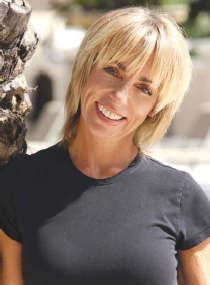Health & Fitness
The Cleansing Breath
By Cheryl Alker
We take many things for granted in life; however, without a doubt, breathing has to be in the top five. Oxygen is the most vital nutrient for our bodies. It is essential for the health of the brain, nerves, glands and internal organs. We can do without food for weeks and without water for days, but without oxygen, we will die within minutes.
One of the major secrets of vitality and rejuvenation is a purified blood stream. The quickest and most effective way to purify the blood is by taking in extra supplies of oxygen from the air we breathe.
By purifying the blood stream, every part of the body benefits, as well as the mind. Your complexion will become clearer and brighter and wrinkles will begin to fade away. In short, rejuvenation will start to occur.
The average person reaches peak respiratory function and lung capacity in their mid 20’s then they begin to lose respiratory capacity between 9% and 25% for every decade of life. So, unless you are doing something to maintain or improve your breathing capacity, it will decline, and with it, your general health and your life expectancy.
The respiratory system should be responsible for eliminating 70% of your metabolic waste. The remaining 30% should be eliminated through defecation – 3%, urination – 8%, and perspiration – 19%. So, if you think that going to the bathroom everyday is important, or that working up a good sweat is healthy, think again – start to value the quality of a simple breath.

Of course, we all know how to breathe. It is something that occurs to us automatically, spontaneously, naturally. We are breathing even when we are not aware of it. So it seems foolish to think that we should take time to learn how to breathe or focus on the quality of our breath. Yet, our breathing often becomes modified and restricted in various ways, not just momentarily, but habitually. We develop unhealthy habits without being aware of it. Our posture can greatly affect our capacity to breathe efficiently. Therefore, vital for us to address good postural alignment. A slouched position will reduce the ability of our diaphragm (the main breathing muscle) to work efficiently and will diminish lung capacity.
Many of us have become habitual “chest breathers” i.e. rapid shallow breathing. Chest breathing is inefficient and can result in an approximate 25% decrease in oxygen being transferred to the blood resulting in poor delivery of oxygen and nutrients to the heart, brain, skeletal muscles, organs and tissues. Chest breathing also utilizes the neck and shoulder muscles. If you think how many times you inhale in one day, no wonder fatigue, pain and discomfort in this area is so common. You can test if you are a chest breather by placing your right hand on your chest and your left hand on your abdomen. As you breathe, see which hand raises more. If your right hand raises more, you are a chest breather. If your left hand raises more, you are an abdomen breather.
Abdominal breathing is also known as diaphragmatic breathing. Good diaphragmatic breathing will lead to an improvement in stamina for both fighting off disease and athletic activity. Like blood, the flow of lymph, which is rich in immune cells, is also improved. By expanding the lungs’ air pockets and improving the flow of blood and lymph, abdominal breathing also helps prevent infection of the lung and other tissues. Most of all, it is an excellent tool to stimulate the relaxation response that results in less tension and an overall sense of well being.
Abdominal Breathing Technique
Breathing exercises such as this one should be done twice a day or whenever you find your mind dwelling on upsetting thoughts or when you are experiencing pain.
Ø Place one hand on your chest and the other on your abdomen. Breathe in through your nose. When you take a deep breath in, the hand on the abdomen should rise higher than the one on the chest. This insures that the diaphragm is pulling air into the bases of the lungs.
Ø After exhaling through the mouth, take a slow deep breath in through your nose imagining that you are sucking in all the air in the room and hold it for a count of 7 (or as long as you are able, not exceeding 7).
Ø Slowly exhale through your mouth for a count of 8/10. As all the air is released with relaxation, gently contract your abdominal muscles to completely evacuate the remaining air from the lungs. It is important to remember that we deepen respirations not by inhaling more air but through completely exhaling it.
Ø Repeat the cycle four more times for a total of 5 deep breaths and try to breathe at a rate of one breath every 10 seconds (or 6 breaths per minute). At this rate our heart rate variability increases which has a positive effect on cardiac health.
Abdominal breathing is just one of many breathing exercises. But it is the most important one to master before exploring other techniques.
So the next time someone tells you to “take a breather,” take it. It may be the most important thing you do for well being that day!
Cheryl Alker specializes in flexibility training, facial exercises and postural alignment. Her 26-year career began as a group fitness and personal trainer. She has lectured and directed fitness training programs in both Europe and the USA and was an advisor for a British governmental health promotion program. Alker and her company Stretch Results International continues to work with a select clientele from a base in Palm Beach County, certifying health professionals in her results-based stretching program, educating consumers through public speaking and offering consultation to clients who wish to lose their muscular pain and gain flexibility to achieve full and active lifestyles. Her program has been accredited with The National Association of Sports Medicine, The American Council of Exercise, The National Strength and Conditioning Association and The Florida Physical Therapy Association. For more information about professional continuing education and consultation options, please call Cheryl at (561) 889 3738 or visit www.stretchresults.com.

